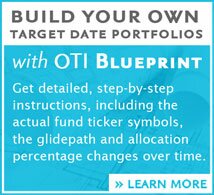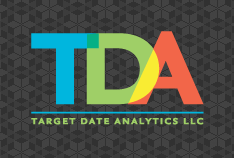Non-QM Loans: Bank Statements, DSCR, and Who They Suit
If you’ve struggled to fit traditional mortgage requirements, you’re not alone—many face the same challenge. Non-QM loans open new possibilities by letting you prove income in less conventional ways, like bank statements or rental cash flow. These loans aim to meet the needs of real people with complicated financial stories. Before you decide whether they make sense for your situation, you’ll want to know exactly how they work—and what’s at stake.
Overview of Non-QM Loans
A Non-QM loan is specifically tailored for borrowers who are unable to meet the standard criteria set forth for traditional mortgages. This category includes self-employed individuals, retirees, and those engaged in gig economy work.
Non-QM loans address the needs of borrowers whose finances do not align with the rigid parameters of Qualified Mortgages. These loans typically allow the use of Alternative Documentation—such as bank statements or asset verification—in lieu of conventional income documentation like tax returns or W-2 forms.
While Non-QM loans may present higher interest rates and require larger down payments, they offer a level of flexibility that may be advantageous for certain borrowers, including real estate investors or individuals with lower credit scores.
It is important to note that the approval process and payment requirements for Non-QM loans can vary and are subject to change over time. Borrowers should carefully evaluate their financial situation and consider the potential implications of opting for a Non-QM loan compared to more traditional mortgage options.
Key Features of Bank Statement Loans
Bank statement loans present a viable option for individuals whose income may not align with conventional documentation requirements typically mandated by lenders. Instead of relying on W-2 forms or tax returns, these loans allow borrowers to qualify based on 12 to 24 months of personal or business bank statements.
This approach appeals particularly to self-employed individuals and real estate investors, as it assesses actual cash flow rather than traditional income metrics.
To qualify for a bank statement loan, borrowers generally need a minimum credit score of 660. One notable aspect of these loans is that they typically do not require mortgage insurance, which can be a cost-saving feature compared to conventional Qualified Mortgages (QM). Loan amounts can go as high as $4 million, offering substantial financing capabilities.
However, it is important to note that these loans often come with larger down payment requirements and potentially higher interest rates and fees. This is indicative of the increased risk associated with the use of alternative documentation.
Consequently, borrowers should carefully evaluate their financial circumstances and the costs associated with bank statement loans before proceeding.
Essential Aspects of DSCR Loans
DSCR loans, or Debt Service Coverage Ratio loans, represent a distinct financing option compared to traditional mortgages. Unlike conventional loans that primarily assess a borrower’s personal income—using documents such as W-2s and bank statements—DSCR loans focus on the anticipated rental income generated by the investment property.
This approach allows investors to qualify for loans based on the property’s ability to cover its debt obligations rather than their individual income circumstances.
A key aspect of DSCR loans is the use of alternative documentation during the qualification process. This is beneficial for real estate investors who may have complex financial situations that do not align with standard income verification processes.
DSCR loan products typically offer larger loan amounts and more flexible payment structures, including options for interest-only payments.
While these loans can present advantages, they generally require a larger down payment compared to traditional mortgages. Additionally, the underwriting process for DSCR loans can accommodate lower credit scores than those commonly accepted for qualified mortgages, reflecting a more flexible approval framework.
However, potential borrowers should be aware that the rates and fees associated with DSCR loans can fluctuate, so it is advisable to consult with lenders for the most current terms.
This loan type may serve as a valuable resource for those engaged in real estate investment, provided they understand the implications of the terms involved.
Who Benefits Most from Non-QM Loans
Non-QM loans serve as a viable option for borrowers who do not meet the standard requirements set by conventional mortgage lenders. This category of loans is particularly beneficial for individuals who are self-employed, those engaged in real estate investing, or those whose income may vary significantly.
Non-QM lenders offer more lenient underwriting criteria, allowing borrowers to use alternative documentation, such as bank statements or assets, in place of traditional income verification methods.
One specific type of Non-QM loan, known as the Debt Service Coverage Ratio (DSCR) loan, is designed for real estate investors. This type of loan evaluates investment property cash flow rather than the borrower's personal income, providing an alternative pathway to financing investment properties.
Additionally, Non-QM loans can accommodate borrowers with past credit events or lower credit scores. Lenders in this space often consider the borrower's overall financial profile rather than focusing solely on credit history, which expands access to credit for those who might otherwise struggle to qualify for a conventional mortgage.
For those who find themselves unable to navigate the stringent requirements of Qualified Mortgages, Non-QM lending represents a practical alternative, enabling a broader range of individuals to pursue homeownership.
Alternative Income Verification Methods
Lenders recognize that not all borrowers have a conventional income stream, which has led to the adoption of alternative income verification methods for assessing eligibility for non-qualified mortgage (non-QM) loans.
One common approach is the use of Bank Statement loans, which generally require 12 to 24 months of bank statements or alternative assets to demonstrate income for self-employed individuals. This method diverges from typical conventional loans, which predominantly rely on W-2 forms or tax returns to ascertain income levels.
Another option available for borrowers is Debt Service Coverage Ratio (DSCR) loans, primarily aimed at real estate investors. These loans evaluate an applicant’s qualifications based on the Cash Flow or the Debt Service Coverage Ratio associated with the investment property, rather than personal income.
This approach allows for a more flexible lending framework, catering to individuals whose financial profiles may not conform to the rigorous standards of Qualified Mortgages (QM).
As a result, alternative income verification methods broaden the scope of financing opportunities for a diverse range of borrowers, accommodating varying income scenarios and financial circumstances.
Pros and Cons of Non-QM Lending
Non-QM loans present a unique lending option that provides flexibility in borrower qualification. Unlike traditional Qualified Mortgages (QMs), which require stringent income verification through standard documentation, non-QM loans often allow for alternative forms of documentation. These can include bank statements or asset returns, making them a viable option for individuals such as real estate investors and self-employed borrowers who may not meet traditional income criteria.
The advantages of non-QM lending include the ability to cater to borrowers with unconventional financial situations and potentially faster approval processes.
However, potential drawbacks must also be considered. Borrowers may encounter higher interest rates and larger down payment requirements, which could impact overall affordability. Furthermore, the approval processes for these loans can sometimes be more complex, necessitating thorough preparation and understanding of rates, fees, and payment obligations.
Given these considerations, it is essential for prospective borrowers to conduct a comprehensive assessment of their financial circumstances and the terms offered by various lenders before proceeding with a non-QM loan application.
Myths and Realities about Non-QM Mortgages
Non-QM (Non-Qualified Mortgage) loans have become increasingly relevant in the current mortgage market, yet a number of misconceptions surrounding them remain. One common misconception is that non-QM loans are inherently subprime; however, this is not accurate. Non-QM loans are intended for borrowers who may have strong income profiles but require alternative means of documentation, such as bank statements or business tax returns, to qualify.
In contrast to conventional Qualified Mortgages (QM), non-QM loans provide greater flexibility, particularly for real estate investors and self-employed individuals who may not have traditional W-2 income. This flexibility can be beneficial for those whose income streams are less conventional or variable.
While it is true that rates and fees for non-QM loans can be higher than those for traditional mortgages, they serve as a viable alternative for borrowers who do not meet the stringent criteria set by typical mortgage products. Importantly, borrowers are still required to demonstrate their ability to repay their loans, ensuring a degree of borrower responsibility.
It is worth noting that the approval process, interest rates, and payment requirements associated with non-QM loans may fluctuate depending on market conditions and lender policies.
Therefore, potential borrowers should carefully evaluate their options and understand the implications of choosing a non-QM loan.
Differences from Qualified Mortgage (QM) Loans
The mortgage industry maintains specific criteria for what constitutes a safe, standardized loan, making it important to understand the differences between Qualified Mortgage (QM) and non-QM loans. Non-QM loans are characterized by their flexibility in lending criteria, which is particularly beneficial for borrowers who may not meet the traditional requirements for qualified mortgages.
Unlike QM loans, which primarily require documentation such as tax returns, non-QM loans allow for alternative forms of income verification. Borrowers can utilize bank statements or other liquid assets to substantiate their financial standing. This flexibility caters to a range of borrowers, including those with higher Debt Service Coverage Ratios (DSCR), lower credit scores, or income derived from unique business ventures.
Additionally, non-QM loans typically enable larger down payments and may offer interest-only payment options. The approval processes for these loans tend to be more adaptable, providing a viable alternative for individuals who do not conform to the standards of conventional or qualified mortgages.
Overall, understanding these distinctions can inform prospective borrowers about their options and the implications associated with each type of loan.
Practical Tips for Non-QM Borrowers
To effectively prepare for a non-QM loan application, it is essential to gather relevant financial documentation. Lenders typically require a comprehensive review of income, which may include 12 to 24 months of bank statements, particularly if applying for a bank statement loan.
For loans based on debt service coverage ratio (DSCR), it is important to emphasize projected rental income and demonstrate solid cash flow, as these loans are often utilized by real estate investors.
Additionally, borrowers should be prepared to present alternative forms of documentation, which may consist of business tax returns or statements prepared by a Certified Public Accountant (CPA).
It is also crucial to consider the credit score requirements; many lenders expect minimum scores of 660 or higher to qualify for non-QM loans.
While non-QM loans provide more flexibility compared to qualified mortgages, borrowers should be aware that interest rates, payment structures, and associated fees can fluctuate.
Understanding these variables is fundamental for prospective borrowers navigating the non-QM loan landscape.
Conclusion
If you're exploring non-QM loans, keep in mind they offer flexible options for borrowers who don't fit the standard mold. Whether you rely on bank statements, rental income, or unique assets, these loans can open doors to homeownership or investment. Weigh the higher costs and risks against the benefits before deciding. By understanding the differences, advantages, and realities, you’ll be better positioned to choose a mortgage solution that fits your individual financial situation.












